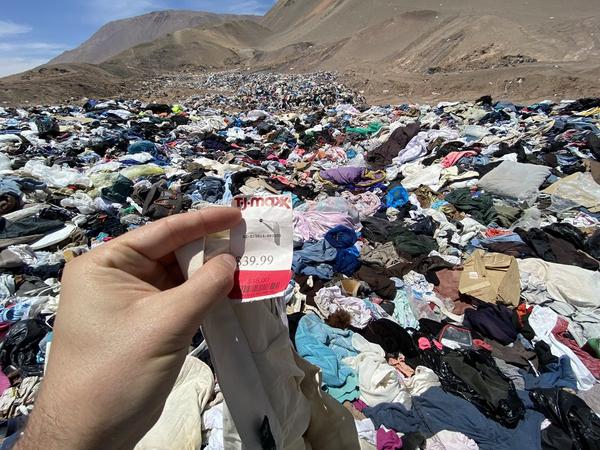The fashion for quick disposal has transformed the Atacama desert into a huge clothing dump
Fashionable clothing made by low-paid workers, many of them children, in Bangladesh or China, bought and worn for a season in the United States, Canada or Europe, exported for disposal to Chile, where it is resold as second hand or smuggled into Bolivia, Paraguay and Peru. It is a circuit that goes from the first to the third world and in which, what is left over, ends in the largest non-polar arid zone on the planet: the Atacama desert, in the Alto Hospicio area, in northern Chile. Tens of thousands of tons of handbags, shoes, rain or ski boots that take more than two centuries to degrade are transforming this desolate plain into a landscape of multicolored mountains that has nothing touristy about it.
Chile is the leading importer of used clothing in Latin America. About 40 years ago, a growing business of “American clothing” stores was established throughout the country. The businesses are supplied with the imported bales that they buy in the duty-free zone in northern Chile. They come from the United States, Canada, Europe and Asia. There are some 59,000 tons that enter the port of Iquique annually, 1,800 kilometers from the capital, Santiago.
In this area of preferential importers and taxes, merchants from the rest of the country select the garments for their stores. Not all. What is not sold cannot go through local customs either, because it is a free zone. The alternatives then are illegal re-export, that is, by smuggling, or disposal in… the illegal dumps of the Atacama desert.
The clothing business reveals its toxicity
According to a 2019 UN study, the world's clothing production doubled between 2000 and 2014, placing the industry as the “ responsible for 20% of the total waste of water globally”. The report adds that only the production of one jean (denim) requires 7,500 liters of water, and that the manufacture of clothing and footwear generates 8% of greenhouse gases. Another example of how polluting it is, the document points out, is that "every second an amount of textiles equivalent to a garbage truck is buried or burned."

“These clothes come from all over the world,” Alex Carreño, a former worker in the import zone of the port of Iquique, explained to the AFP agency. The man lives next to one of the clothing dumps. “What was not sold to Santiago or smuggled to other countries then stays here,” he says.
At least 39,000 tons end up each year as garbage in the desert, in the Alto Hospicio area. There, in the Tarapacá region, is one of the final destinations for “second-hand” clothing or clothes from past seasons that are discarded in peripheral countries by fast fashion chains from the richest and most consumerist nations.
What is Piles? And How to Treat Piles?Piles is a swollen and inflamed veins in the rectum and anus that cause disc… https://t.co/HUVA086sLp
— Dr Mahesh Sanghavi Fri Apr 05 04:42:37 +0000 2019
